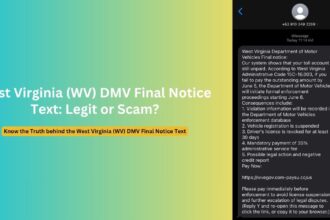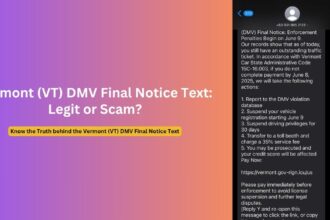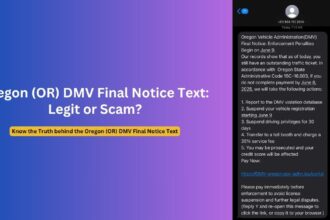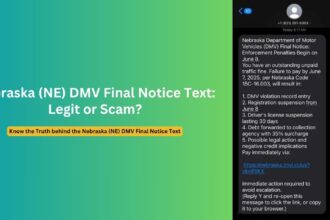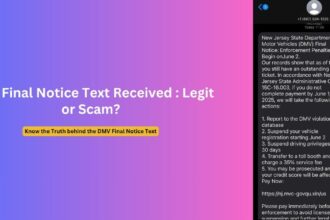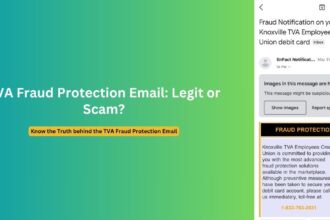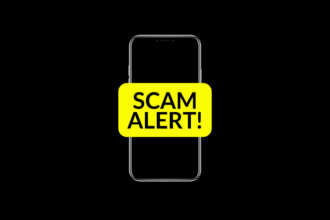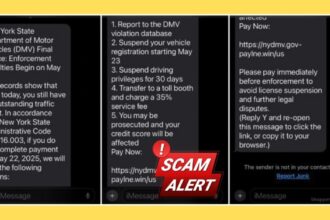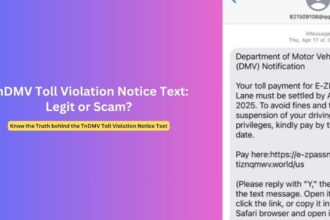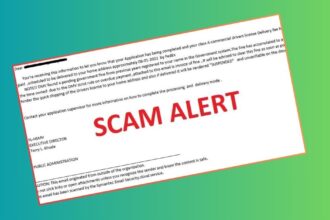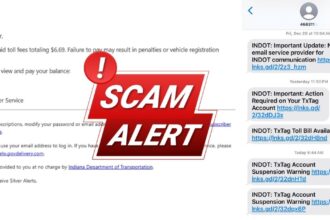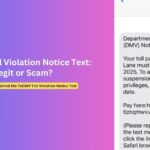If you’ve received an email offering a Ring camera at an astonishing 90% discount, you’re not alone. Over the past year and a half, countless Ring users have been targeted by sophisticated phishing campaigns designed to steal personal and financial information. As America’s most popular video doorbell, accounting for 40% of all doorbells in use according to Business Wire, Ring’s widespread adoption has made it an attractive target for cybercriminals.
This investigative report reveals how these scams operate, how to identify them, and what steps to take if you’ve encountered or fallen victim to one of these increasingly convincing fraud attempts.
The Surge in Ring Scam Email Attacks
Since early 2024, a wave of phishing emails has been targeting Ring doorbell and camera owners with offers that seem too good to be true—because they are. These sophisticated scams have evolved from occasional incidents to a persistent campaign affecting users across multiple countries.
The attacks follow a similar pattern: emails addressed to users by their registered Ring account names, offering indoor or outdoor cameras at a 90% discount (typically around $9.99), claiming it’s a “thank you” reward, clearance, or restocking offer. These emails direct victims to convincingly designed fake websites that mimic Ring’s official site.
“Scammers will use every avenue available to them, including phone, text, and email,” explains Caitlyn from Ring’s official support team. “The spam folder in your email likely catches a lot of scam emails, but some can slip through.”
Community forums show reports spanning from January 2024 through April 2025, indicating this isn’t a short-term campaign but a persistent threat that has successfully compromised financial information of numerous Ring customers.
Inside the Scam: How It Works
The Ring phishing operation employs several sophisticated techniques that have successfully tricked even tech-savvy consumers. Here’s the typical progression of the scam:
- Initial Contact: Users receive an email that appears to be from Ring, often addressing them by their actual account name, offering a significantly discounted camera (90% off).
- Spoofed Sender: The email appears to come from Ring but actually originates from a spoofed or similar-looking domain (for example, “[email protected]” instead of a legitimate ring.com address).
- Convincing Clone Sites: Clicking the offer link directs users to a meticulously designed fake “Ring Shop” website that mirrors the legitimate site’s branding, logos, and layout.
- Data Collection: The fake site prompts visitors to enter personal information, including full name, address, and crucially, credit card details and sometimes even Social Security numbers.
- Multiple Charges: Victims who input their payment information typically see multiple unauthorized charges on their accounts, as reported by community members who fell for the scam.
- Account Takeover Attempt: Some versions of the scam also include a fake Ring login page that captures victims’ credentials, potentially allowing scammers to access their Ring accounts and the associated camera footage.
- Redirect to Legitimacy: After collecting sensitive information, some of these scam sites redirect users to Ring’s actual website to maintain the illusion of legitimacy and delay the discovery that a scam has occurred.
One Ring user who fell victim reported: “I stupidly fell for it and ordered a camera, paid on card, then realized it was a scam when the scammers took two debits from my account and I looked at the return email address.”
Identifying Fake Ring Emails: Pattern Recognition
These phishing emails follow several recognizable patterns that can help users identify them before clicking on dangerous links:
Common Subject Lines:
- “Ring Special Offer – 90% OFF Today ONLY!”
- “Thank you for being a loyal Ring customer – Claim your reward”
- “Limited Time: Ring Indoor Camera – $9.99 (48 hours only)”
- “Ring Clearance: 90% Discount on Security Cameras”
- “Ring Restocking Offer – 90% OFF for Registered Users”
Message Structure:
- Personalized greeting using your actual Ring account name
- Brief message creating urgency (limited time, 48-hour countdown, etc.)
- Emphasis on the dramatic discount (always 90% off)
- “Click here” button or hyperlinked text leading to the malicious website
- Ring logo and footer that appears legitimate at first glance
As one forum user noted: “It is very convincing and easy to fall for with all the right logos.”
Red Flags: How to Spot the Scam
While these phishing attempts are increasingly sophisticated, they still contain telltale signs that can alert observant users:
1. The Unrealistic Discount
The 90% discount is the most obvious red flag. As one community member pointed out: “What company nowadays is going to offer you 90% off?” Legitimate businesses rarely offer such extreme discounts, especially on popular electronics products.
2. URL Discrepancies
When visiting the linked website, the domain name is never actually ring.com. Users have reported various domains including:
- PeaksPursuit.com
- ring-rewards.com
- ring-specialoffer.co.uk
- immobilmedia.com/ring
3. Non-Functional Website Elements
Multiple users reported that the clone websites have non-working elements:
- “None of the links work at the bottom of the page”
- Navigation menus that don’t function properly
- “About Us” or “Contact” pages that lead nowhere
4. Grammatical Errors
Despite their professional appearance, these emails often contain subtle grammatical mistakes or awkward phrasing, such as:
- “This require you to update information as soon as possible”
- “This update is also a new Ring security statement which goes according to the established norms”
- “This new security statement will helps us continue to Ring”
5. Excessive Information Requests
Legitimate online stores don’t request Social Security numbers for standard purchases. Any site asking for this level of personal information should immediately raise suspicion.
Protecting Yourself: Prevention Strategies
Taking proactive steps can help protect you from falling victim to these and similar phishing attempts:
Verify Direct Sources
The safest approach is to never click links in emails regarding accounts or services. Instead:
- Open a new browser window and navigate directly to Ring.com
- Log into your account through the official app
- Call Ring’s customer service using the number from their official website
Check Sender Details
Before interacting with any email:
- Click on the sender’s name to reveal the actual email address
- Verify it ends with “@ring.com” (not similar variations like ring.co, ring-mail.com, etc.)
- Remember that legitimate Ring communications come from specific domains like [email protected] or [email protected]
Enable Multi-Factor Authentication
Add an extra layer of security to your Ring account:
- Log into your Ring account
- Navigate to Account Settings > Two-Factor Authentication
- Follow the prompts to enable this additional security feature
Stay Informed
Keep up with the latest security threats:
- Join legitimate user communities like the official Ring Community forums
- Follow Ring’s official social media accounts for announcements
- Consider signing up for scam alerts from consumer protection organizations
Update Contact Information
Ensure your Ring account has your current information:
- Keep your email address and phone number updated
- This ensures you’ll receive legitimate security notifications
What to Do If You’ve Been Scammed
If you suspect you’ve fallen victim to a Ring phishing scam, take these immediate steps:
1. Financial Protection
- Contact your bank or credit card company immediately to report fraudulent charges
- Request a new card with a different number
- Monitor your accounts closely for additional unauthorized charges
- Consider placing a fraud alert on your credit reports
2. Account Security
- Change your Ring account password immediately
- Change passwords for any other accounts that share the same password
- Check your Ring account for any unauthorized devices or changes
3. Report the Scam
- Report the incident to Ring through their official help channels
- File a report with the Federal Trade Commission (FTC) at ReportFraud.ftc.gov
- Forward phishing emails to the Anti-Phishing Working Group at [email protected]
- Report the scam to your local consumer protection agency
4. Monitor for Identity Theft
- Watch for signs of additional fraud or identity theft
- Consider credit monitoring services if sensitive information was compromised
- Review your credit reports regularly for suspicious activity
As Ring’s official representative advised: “If you do click a suspicious link and provide any financial details, please contact your financial institution immediately to report your compromised information.”
Frequently Asked Questions
1. How can I tell if a Ring discount email is legitimate?
Legitimate Ring promotions will never offer 90% discounts. Always verify offers by going directly to Ring.com or the official Ring app. When in doubt, contact Ring customer support through official channels to confirm any promotion’s authenticity.
2. Why do these scam emails know my Ring account name?
While Ring hasn’t confirmed any data breaches, scammers may obtain customer information through various means, including previous data breaches from other companies, social engineering, or potentially compromised third-party services connected to Ring. This personalization makes the scams particularly convincing.
3. Will Ring ever ask for my Social Security number?
No. Ring will never request your Social Security number for purchases, account verification, or any other reason. Any site claiming to be Ring and asking for this information is fraudulent.
4. I clicked the link but didn’t enter information. Am I safe?
While safer than providing your information, clicking links in phishing emails can sometimes install malware or tracking cookies on your device. As a precaution, run an antivirus scan, clear your browser cache and cookies, and monitor your accounts for suspicious activity.
5. How do I report suspicious Ring emails?
Forward suspicious emails to [email protected] and [email protected]. You can also report them to the FTC at ReportFraud.ftc.gov and to the Anti-Phishing Working Group at [email protected].
Conclusion: Vigilance is Key
The persistence and sophistication of these Ring phishing campaigns highlight the evolving nature of cybercrime targeting smart home device users. As these devices become more integrated into our daily lives, they create new avenues for cybercriminals to exploit.
“This feels kind of targeted,” noted one Ring community member, reflecting the personalized nature of these attacks that makes them particularly dangerous.
While Ring continues to implement security measures and warn customers about these threats, the most effective protection remains user vigilance. By approaching unexpected offers with healthy skepticism and following security best practices, users can significantly reduce their risk of falling victim to these increasingly convincing scams.
Remember the cardinal rule of online security: If an offer seems too good to be true—especially a 90% discount—it almost certainly is.
This article is published by shoppersvila.com. Unauthorized reproduction or distribution of this content is prohibited. If you’ve encountered similar phishing attempts or have additional information about these scams, please share your experience in the comments section below.

